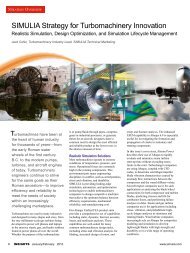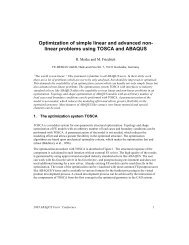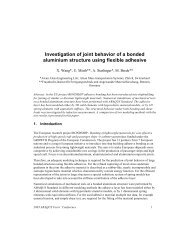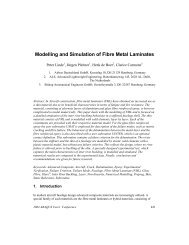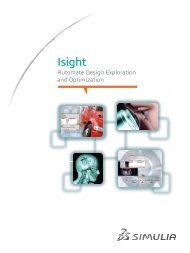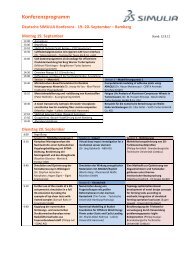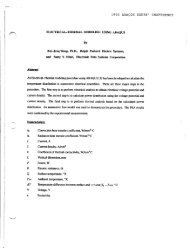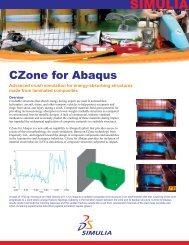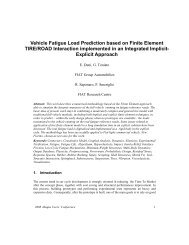Modeling Component Assembly of a Bearing Using Abaqus - SIMULIA
Modeling Component Assembly of a Bearing Using Abaqus - SIMULIA
Modeling Component Assembly of a Bearing Using Abaqus - SIMULIA
Create successful ePaper yourself
Turn your PDF publications into a flip-book with our unique Google optimized e-Paper software.
15<br />
Analysis Results <strong>of</strong> Case C-1 (1/3)<br />
• Step-1. Shrink fit cooling sleeve and bearing housing with initial<br />
diametral interference equal to 0.005 inch for both Int-1 and Int-2.<br />
This induces von Mises stress at a level <strong>of</strong> ~10ksi in cooling sleeve.<br />
• Step-2. Activate groove welds with strain-free condition. Stresses in<br />
the welds were verified to be zero.<br />
• Step-3. Activate bearing sleeve with strain-free condition. Stresses<br />
in the bearing sleeve were verified to be zero.<br />
• Step-4. Interference fit bearing sleeve and the assembly <strong>of</strong> cooling<br />
sleeve and bearing housing with initial diametral interference equal<br />
to 0.002 inch for Int-3, and 0.002 inch for Int-3. This induces von<br />
Mises stress at a level <strong>of</strong> ~11ksi in bearing sleeve. Meanwhile, the<br />
stress in cooling sleeve is reduced from ~10ksi to ~8ksi and the<br />
stress in bearing housing is increased to ~3ksi to ~8ksi.<br />
• Step-5. Application <strong>of</strong> Loads. This introduces high stresses at tip<br />
<strong>of</strong> the lower weld as well as at the discrete contacts between<br />
bearing housing (outer layer) and cooling sleeve (middle layer).




